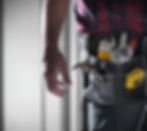Built
Tools

Do thumbs count as tools? Is the body a tool for the mind? Are tools always tangible? There scramble to figure out the history and evolution of the built world continues. The border between the environment and ourselves has grown deeper with the ages. Understanding materials and external concepts of need and usefulness have allowed the development of tools in human society. The early use of tools has only been seen widely within human groups. The ability to understand that something done regularly can be made easier than the way it was learned is a process that takes a different form of thinking than the basic alleviation of need seen throughout the animal kingdom.
In general, " concepts enable humans and animals to organize the world into functional groups; the groups may be composed of perceptually similar objects or events, diverse things that have a common function, relationships such as same versus different, or relations among relations such as analogies." The ability to make these external comparisons through the use of concepts enables the extension of self and is an initial tool required for constructing the world.
Purpose

Everything that serves a purpose can be thought of as a tool. In fact, there are many layers to the purposes and origin of the tools we know today. Dams, nests, burrows, hives, and ant hills are examples of built structures seen throughout nature. The need for shelter from the elements is deep and affects creatures on land more frequently than those in the oceans. More basic tools that are often innate throughout nature include songs, dances, and foraging habits. The innate, however, are all given and not made by the user for a specific purpose. The ability to understand that various pieces can come together to shape a structure for a specific task given a certain amount of energy and time takes extended thought. The purpose of those examples of built structures in nature at the basic level is shelter and those for the innate examples is broad, including communicating, socializing, marking territory, and getting food. In human society we can see the extensions of purpose to larger groups and longer time frames. Built examples today can aim to serve thousands of people daily for several years or generations while the natural built examples are for lone animals or up to a handful of animals for a given instance and last a few seasons in most cases.
The body being a tool for extending the mind is itself a concept to be grasped. It is unlikely turtles think their shells homes, tigers their claws knives, polar bears their coats parkas, or whales their chords telephones but the natural purposes have built analogs. The ability to see the usefulness in something comes in the lacking and ability to appreciate the difference. The action of filling that purpose with pieces selected intentionally and refined over multiple instances is a given gift. Many animals have five digits but only humans have opposable thumbs. The length of dependency on parents during youth and the difference between generations is another social tool that allows for the understanding of needs across generations.
Energy

There are many technologies today that are quickening the pace of tool, device, gadget, appliance, and instrument creation. The complexity of the concepts required too is increasing. The built world rests on explicit solutions tested across the expected use cases to be seen. The world is changing quickly. The energy needs too are steadily increasing in lockstep with this trend. How our built world progresses is a statement to the values seen in the society as well. Moving from the first stone tools dated to several million years ago, into large stone structures that lasted several thousand years, and arriving at the structures seen today we see a acceleration of the pace of progress as each new tool built extends those that came before. The advent of libraries for books, factories to make specific items, and skyscrappers to pack the most people into already filled cities have been among the biggest markers of the current rate change in progress. The scale at which development is occurring speaks to the coordination possible in the connected world we occupy. What structures will be made possible through the extended adherence to this trend? What is the long term purpose of tools in society? How complex will the structures be able to become in our built environment? What kinds of questions will we face in the times to come as we reflect on the values our society projects based on the impact on the natural world?


















